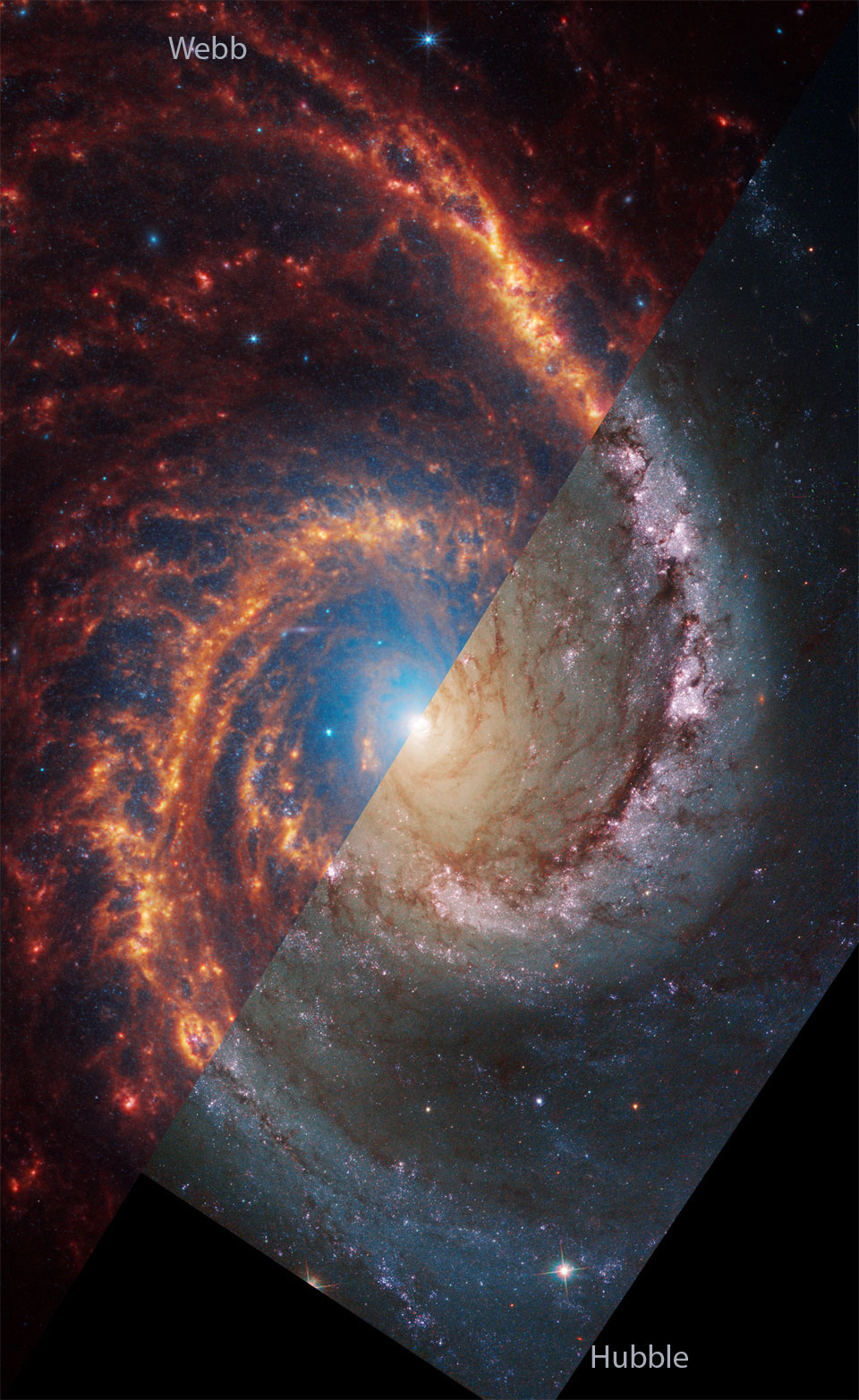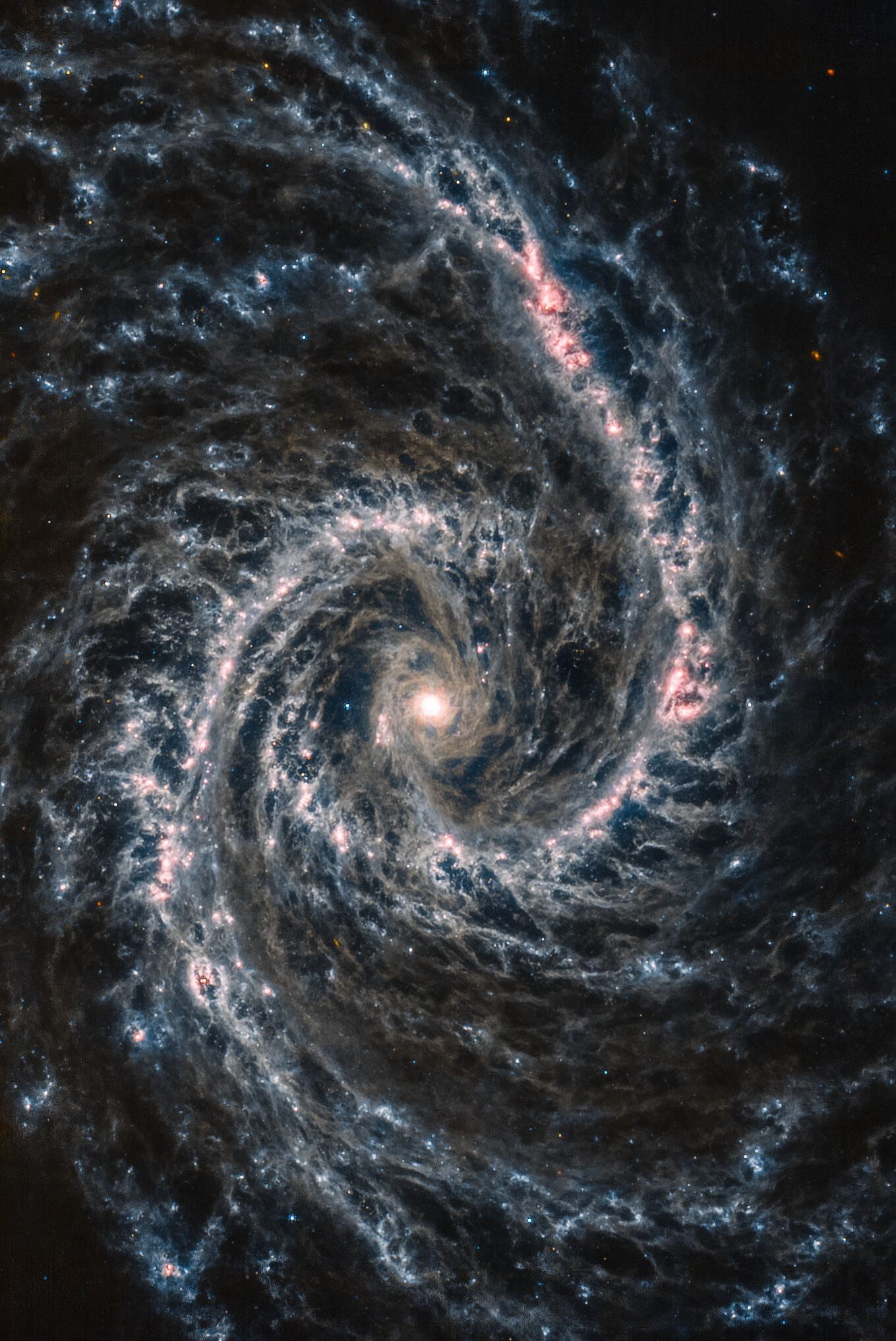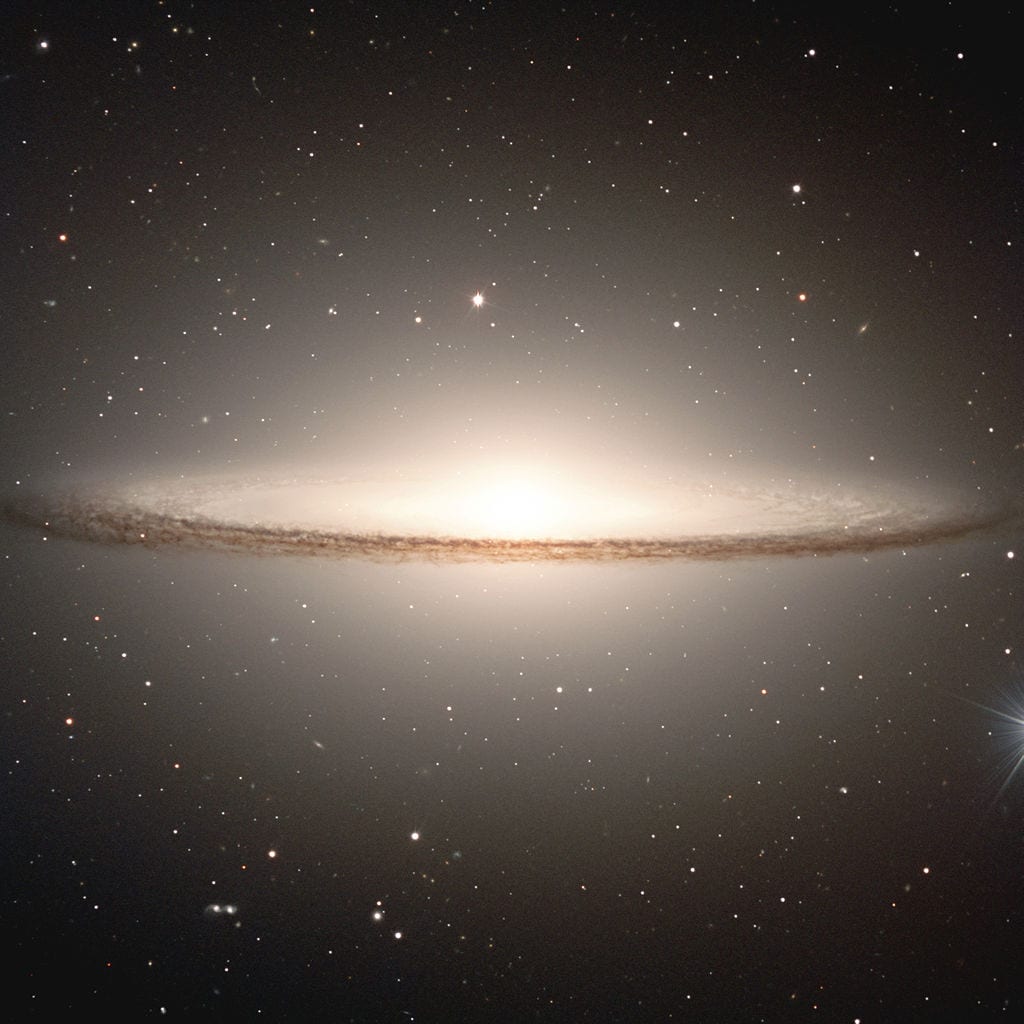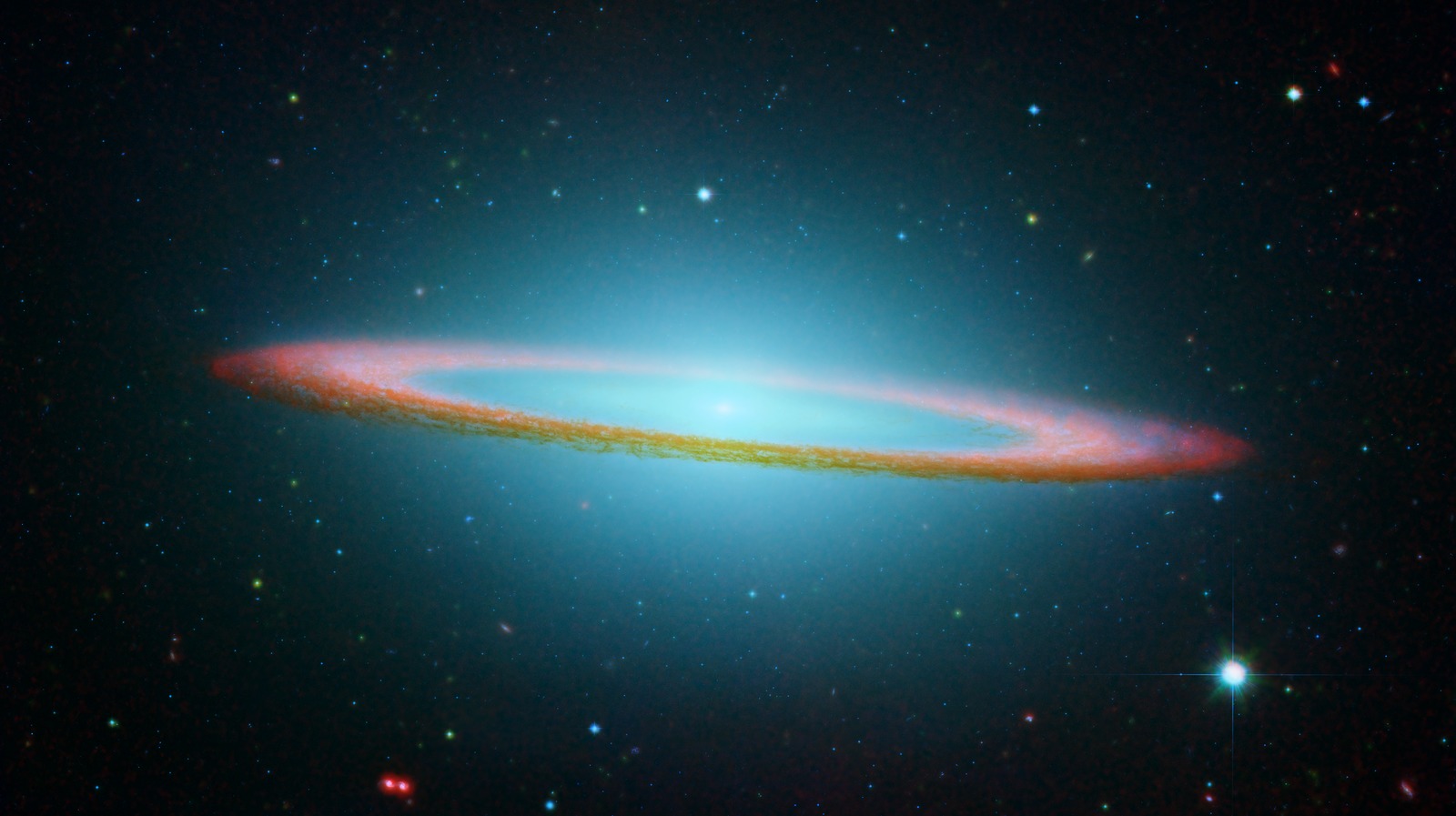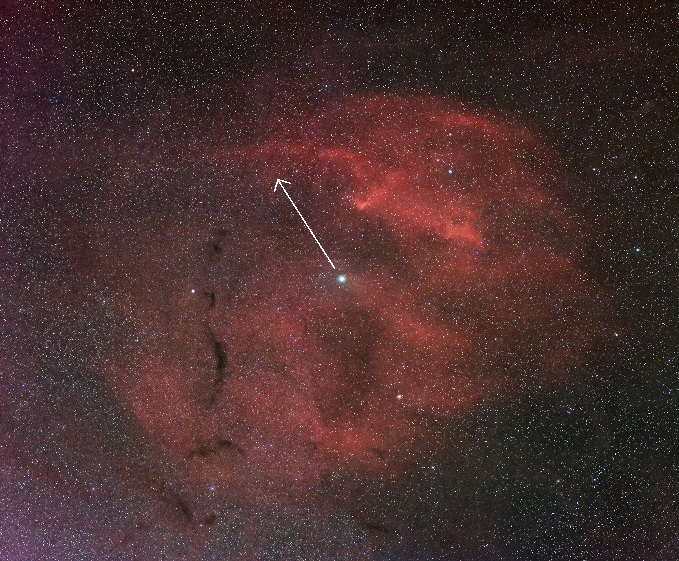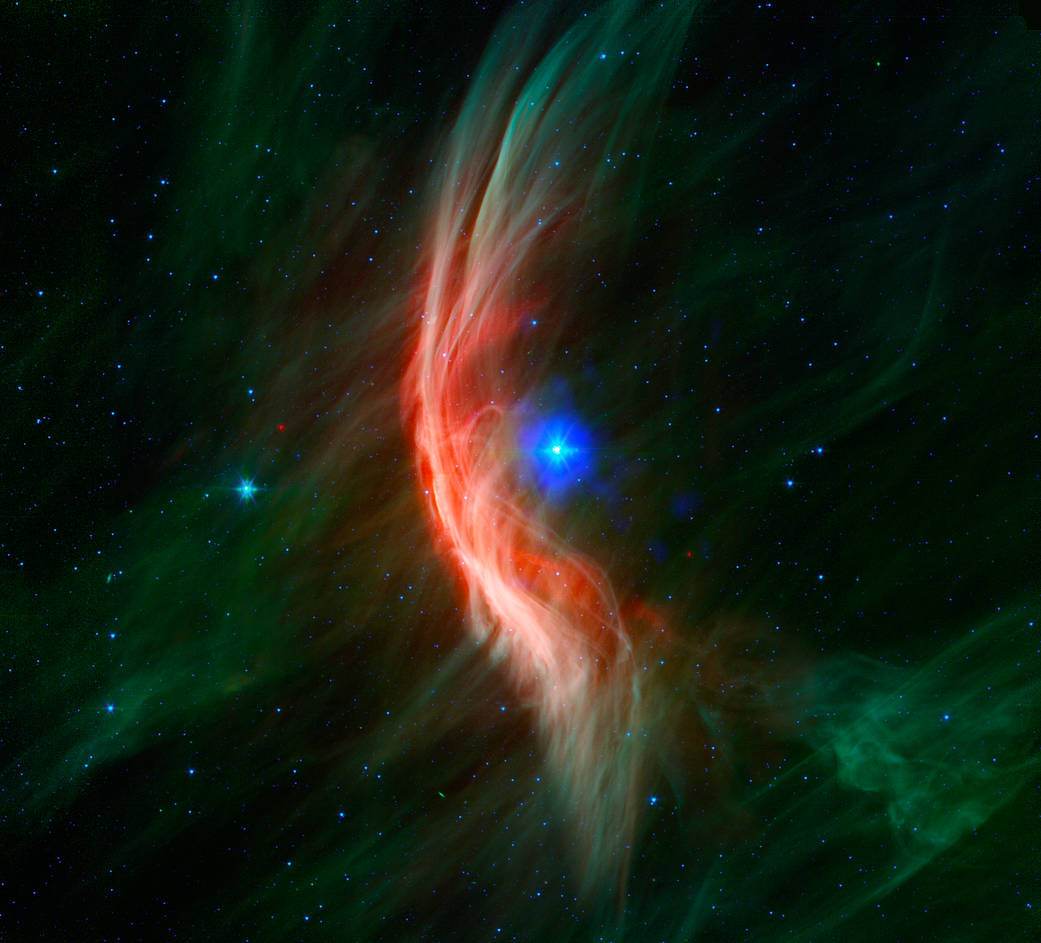Christian G. wrote: ↑Tue Feb 06, 2024 2:14 pm
In my book the first thing one has to learn about the cosmos is how exhilarating it is! The second thing is all the knowledge, which can only be fun to acquire once you’ve learned the first thing. Ann, you are a great teacher at both!
By the way can anyone spot tiny background galaxies in the APOD? I’m curious to see how those would compare between Hubble and Webb.
I'm very glad you appreciate my posts, Christian!

There is one galaxy that is seen right through the disk of NGC 1566 at upper left:
In the Hubble version of this region, you can see that the orange object next to the arrow is quite fuzzy. That means that it isn't a star, so it must be a galaxy. (Okay, it
might be a globular cluster, but that's not likely.) The orange color is due to the fact that this galaxy is quite distant, so it is redshift-reddened, but it is also seen through the disk of NGC 1566, so it is also quite heavily dust-reddened. The galaxy is most likely an elliptical galaxy with no spiral arms and no star formation, but we can't be sure about that. Galactic arms are almost always much fainter than the galactic core, even though there are a few exceptions (see
here). The galaxy that we see through the disk of NGC 1566 could be a spiral like
UGC 11105, which has a bright inner region and faint arms, or it could be an
elliptical galaxy.
In any case, what Hubble detected from this galaxy was reddened light from a population of old red and yellow stars. What JWST detected from this galaxy was
also light from red and yellow stars.
Red stars are shown as blue in JWST images. Dust, by contrast, is shown as red or orange in JWST images. But we see no orange color from this galaxy in the JWST image. That means that JWST has not detected any appreciable amounts of dust in this galaxy. Again, this means that the galaxy is either a spiral galaxy with faint arms and little dust in its center, or else it is really an elliptical galaxy.
To see what I mean, consider two pictures of the iconic galaxy M104, one in visible light by ESO and one in infrared light by Spitzer:
In the Hubble image taken in visible light, the stars of M104 look yellowish and the dust looks brown. In the infrared image by Spitzer, the stars are cyan-colored and the dust is red, pink and brown.
If a galaxy looks "all blue" in an infrared image, we should definitely assume that it is dominated (and perhaps completely dominated) by old red and yellow stars.
Ann
 NGC 1566: A Spiral Galaxy from Webb and Hubble
NGC 1566: A Spiral Galaxy from Webb and Hubble